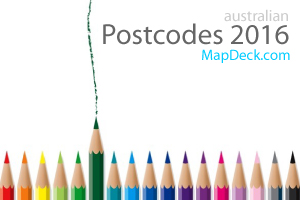As with all the other initiatives of similar type, the success will be measured by uptake of released data by business and the community. However, this information is hard to compile, so my litmus test of the likely success of a particular “data.gov.au” initiative is how much of useful information is put in the public domain...
It looks that SA is on a right track releasing full roads dataset but more spatial data has to be made available in order for this initiative to start paying off for the effort involved. My next criticism is rather useless (or frankly, lacking) metadata information for supplied data but this issue is not unique to SA and other jurisdictions are also guilty of neglecting that aspect of the "data discovery" part of their respective project. "ISO 19115 - Geographic Information Metadata" is certainly nowhere to be seen on "data.gov.au" portals...
Below is a quick scorecard of State and Federal government open data initiatives - based on availability of “high value” spatial data (as per my very subjective list).
Table. Availability of Free Fundamental Spatial Data
Dataset
|
Fed
|
ACT
|
NSW
|
NT
|
Qld
|
SA
|
Tas
|
Vic
|
WA
|
Gazetteer
|
Yes
|
Yes
|
Yes
|
||||||
Cadastre boundaries
|
Yes (by LGA)
|
Adelaide
City only
|
Yes
|
||||||
Addresses locations
|
Gungahlin
Town Centre only
|
Yes (as a list)
|
Yes
|
||||||
Roads
|
Yes (State managed only)
|
Yes
|
Yes
|
||||||
Admin boundaries
|
Yes (via ABS)
|
Some State specific
|
Yes
|
||||||
Property sales
|
By LGA only
|
?
|
|||||||
Property/ land valuations
|
Yes (data at LGA level only)
|
?
|
|||||||
Elevation
|
Yes
(30m)
|
Yes (90% coverage at 10m)
|
Yes (contours 1m+)
|
||||||
High Res imagery
|
25-15m
Landsat; 2.5m AGRI
|
Potentially (as tile service)
|
Old Landsat imagery
|
||||||
Overall
|
I will restrain from providing my assessment of those initiatives at this point in time. It is enough to say that expectations are high as to the economic value free and open data could deliver but, as you can see from the above matrix, there are many gaps in availability of what I consider fundamental data to make any meaningful impact… Let's give it a year and see if there are any improvements.
Related Posts:
East coast unanimously frees data
Free data a GFC casualty
Governments intensify free data efforts
Data overload makes SDI obsolete
What’s the benefit of gov data warehouses?
First spotted on: spatialsource.com.au







